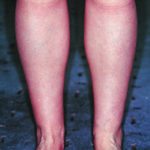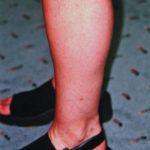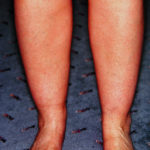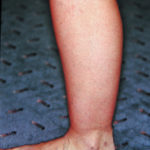Thick calfs and ankles in an otherwise not overweight female is not a rare problem. It is frustrating for these women as it is just the way their body was made and is not a reflection of their lack of effort to try and reduce it. (which they can not) While liposuction is commonly performed all over the body, the calf and ankle is not an area treated by all plastic surgeons.

The best test is to pinch up the area between the fingers and see if you can ‘pinch an inch’. If the skin and tissues are thick and can not be made to bunch up between the fingers, this is a poor sign for a good result.
When doing calf and ankle liposuction, there are two fundamental approaches. The first approach is spot reduction. This means treating just a few areas to get more shape, such as just below the knee on the inside of the lower leg and then from the inner calf down to the ankle. The idea is to get a better calf outline and shape. The best way to find the right areas to suction is to have the patient stand on their toes and outline the the calf muscle, marking above and below the muscle outline.

Very small cannulas in the calf and ankle area are used as it is important to avoid taking away too much fat too quickly. It is easy to create indents in these areas, particularly around the ankle area. There is not a lot of fat in this area and the use of very small cannulas is one way to avoid this problem.
Dr. Barry Eppley
Indianapolis, Indiana




